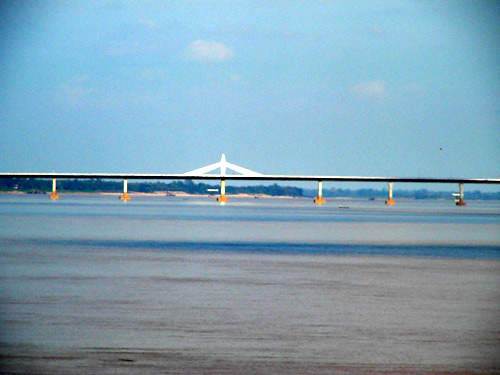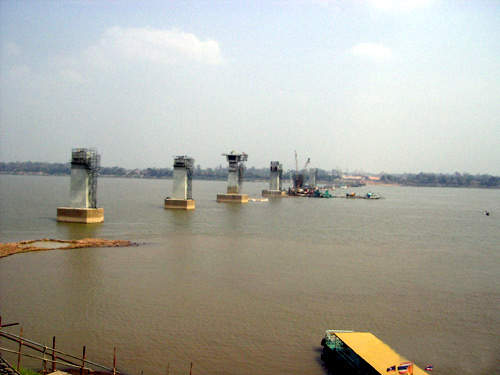The Thai-Laos rail link is a metre-gauge railway track connecting Thailand (Thai) and Lao People's Democratic Republic (Laos). It is the first railway line connecting the two countries and also the first international railway link for Laos.
The Thai and Laos governments signed an agreement on 20 March 2004 to build the railway line from the middle of the 'Mitraphab' Friendship Bridge joining the Thai side track to Thanaleng. The track is 3.5km long starting at Nong Khai in Thailand and ends at Ban Thanaleng in Laos.
The rail project was planned to be built in two phases. The first phase of the project (Phase 1) included the construction of a 3.5km-long railway track between Nong Khai and Thanaleng. The project was completed and the rail link was open for passengers and cargo in March 2009.
An extension of the rail link as the second phase of the project is currently under review.
Phase 1
Construction work for the first phase of the Thai-Laos rail link was started in October 2006. Contract works for the first phase were awarded to Sermsanguan Construction. The construction work was completed in April 2008. Starting on 4 July 2008 the track was tested by running test trains. The link was formally inaugurated on 5 March 2009 by Thailand's Princess Maha Chakri Sirindhorn, at Nong Khai station.
The first phase of the project cost THB197m ($5.4bn) and was financed by the Thai government. The funding was structured in the form of 30% grant and 70% soft loan.
Phase 2
The second phase (Phase 2) of the railway link is an extension of the existing link. It will include construction of a 9km railway track from Thanaleng to Vientiane.
In February 2006, Agence Française de Développement (AFD) agreed to fund Laos for the second phase of the railway line. AFD is a bilateral development financial institution operated by the French government. It aims at promoting sustainable economic growth and funds based on the Overseas Development Assistance policies of the country.
The Phase 2 funding approval came as a part of the trilateral agreement between France, Thailand and Laos. The total cost of the second phase is estimated at €10m ($13.2m or THB469m). It includes cost of feasibility studies, and cost of infrastructure and equipment for road toll. AFD is conducting elaborate studies for the implementation of second phase.
While the current equipment being used is operated by Thailand, the Lao PDR is talking with prospective suppliers and donors regarding the rolling stock and extension of rail lines to other parts of the country.
Mutual benefits
The Thai-Laos rail link is a mutually beneficial project for Thailand and Laos. The project was initiated with the objective of improving economic growth in the two countries. For Laos, the project was also aimed at improving its connectivity with the whole region.
An active foreign trade has been going on between Laos and Thailand for a long time. Laos exports agricultural products and timber to Thailand, and imports construction materials and consumer products from Thailand.
Laos does not have direct access to the sea and trucks were the only mode of transport between the countries.
The new transportation facility results in a high reduction in export costs. The Thai-Laos rail link is likely to significantly improve the trade activity and relations between the two countries.
The project is also a boost to the domestic tourism industries in both countries. According to estimates by the State Railway of Thailand (SRT), each train along the route carries 500 passengers every day.
Bilateral agreement
The Thai-Laos rail project was a result of the bilateral cooperation agreement between Thailand and Laos, to double the volume of their bilateral trade by 2010.
Under the agreement, the Thailand government is assisting the infrastructural development in Laos, including railways, airports, roads and bridges. Some of the projects for which Laos is being funded include the railway linking Thailand, Laos, and Vietnam along the R12 route, the third Mekong Bridge linking Nakhon Phanom and Khammouan Provinces, and the Mekong Bridge linking Chiang Rai and Bokeo Provinces on the R3 route.
Further, on 16 January 2009, Kasit Piromya, the Foreign Minister of Thailand, confirmed the country's support for the fourth Thai-Lao friendship bridge between Chiangkhong and Huai Sai.






